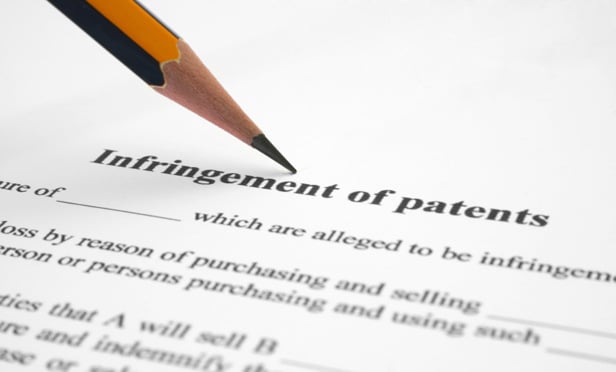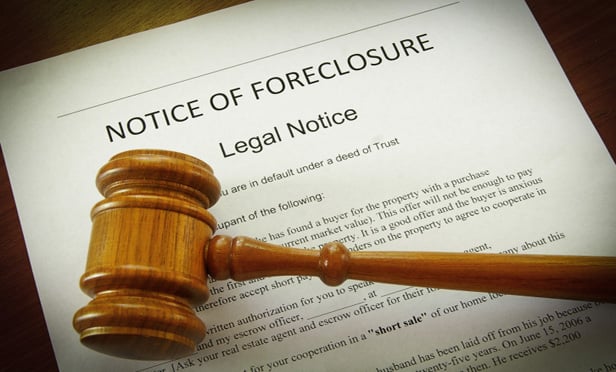Features

Written Opinions Of Counsel: Valuable Tools for Avoiding Willful Patent Infringement
Written opinions of counsel are gaining renewed interest as a valuable tool to limit liability for willful patent infringement. A patent opinion that is competently written by a registered patent attorney sets forth the factual and legal basis for finding a patent not infringed, invalid, and/or unenforceable. However, to be effective, the timing of the rendered patent opinion may be critical.
Features

To Relocate, or Not to Relocate; Was That Even the Intriguing Question in <b><i>Bisbing</i></b>?
<b><i>Part One of a Two-Part Article</i></b><p>As of August 2017, the seminal case in New Jersey deciding the issue of the appropriate legal standard for a divorced parent seeking to relocate outside of the state is <i>Bisbing v. Bisbing</i>. This case is an important example that can be used to explore this topic throughout the country.
Features

The False Claims Act Seal: Does It Bind and Gag the Defendant?
<b><i>Part One of a Two-Part Article</i></b><p>A company that finds itself the target of a federal fraud investigation often faces the fraught question of whether it may, or even must, disclose the existence of that investigation to third parties, such as its investors, shareholders, major creditors, or insurers. The question can be even more complicated if that investigation is being pursued under the False Claims Act and arises as the result of a sealed <i>qui tam</i> complaint.
Features

9th Cir. Appellate Arguments; FL Sup. Ct. Ruling on Pre-'72 Recordings
Just a few days after the Florida Supreme Court ruled the state's common law doesn't provide pre-1972 sound recordings with rights to public performance royalties, the U.S. Court of Appeals for the Ninth Circuit heard oral arguments on whether remasterings inject pre-1972 sound recordings with federal copyright protection.
Features

The Consequences of Imperfect Foreclosure Affirmations
Where the borrower's default is not in dispute, the First Department appears to have recognized that there is little reason to delay the inevitable foreclosure. Discussion of a case in point.
Features

Internal Whistleblowers
<b><i>SCOTUS Review of Dodd-Frank to Change the Landscape</i></b><p>In June, the Supreme Court granted <i>certiorari</i> in <i>Digital Realty Trust Inc. v. Somers</i>, to review a Ninth Circuit decision regarding SEC whistleblowing protections. The Court's ruling is highly anticipated, as it will clarify the landscape for whistleblower protections.
Features

Date Approaches for Start of EU Trade Secrets Directive
In 2016, concerns about protecting trade secrets in the European Union resulted in Directive (EU) 2016/943 of the European Parliament and of the Council of June 8, 2016. Directive (EU) 2016/943, which will impact the entertainment industry, seeks to protect undisclosed know-how and business information (trade secrets) against their unlawful acquisition, use and disclosure.
Features

When Lack of Informed Consent Is Not the Issue
When an injury occurs, the first reaction of those in the medical office might be to ask, "Did the patient sign an informed consent form?" When the answer is "Yes," and the harm that occurred is listed as a possibility on that signed form, everyone can breathe a sigh of relief. Right? Not so fast.
Features

Exclusion of Evidence: The FDA's 510K Process
In a drug or medical device injury case, one of the defense's most potent arguments often is that the product in question underwent FDA approval. But when a device is approved for sale to the public through the FDA's 510(k) process, the rigorous safety and efficacy analysis required of new and unique medical devices has not been undertaken.
Features

Children of a Married Same-Sex Couple
<b><i>The Presumption of Legitimacy</i></b><p>In what is being hailed as a landmark decision, New York's Appellate Division, First Department, recently held that the presumption that a child born to a married couple is their legitimate offspring applies not only to biological children of both spouses, but also to children born through more modern means — even when the married parties are in a same-sex marriage.
Need Help?
- Prefer an IP authenticated environment? Request a transition or call 800-756-8993.
- Need other assistance? email Customer Service or call 1-877-256-2472.
MOST POPULAR STORIES
- The 'Sophisticated Insured' DefenseA majority of courts consider the <i>contra proferentem</i> doctrine to be a pillar of insurance law. The doctrine requires ambiguous terms in an insurance policy to be construed against the insurer and in favor of coverage for the insured. A prominent rationale behind the doctrine is that insurance policies are usually standard-form contracts drafted entirely by insurers.Read More ›
- The Brave New World of Cybersecurity Due Diligence in Mergers and Acquisitions: Pitfalls and OpportunitiesLike poorly-behaved school children, new technologies and intellectual property (IP) are increasingly disrupting the M&A establishment. Cybersecurity has become the latest disruptive newcomer to the M&A party.Read More ›
- A Lawyer's System for Active ReadingActive reading comprises many daily tasks lawyers engage in, including highlighting, annotating, note taking, comparing and searching texts. It demands more than flipping or turning pages.Read More ›
- Abandoned and Unused Cables: A Hidden Liability Under the 2002 National Electric CodeIn an effort to minimize the release of toxic gasses from cables in the event of fire, the 2002 version of the National Electric Code ("NEC"), promulgated by the National Fire Protection Association, sets forth new guidelines requiring that abandoned cables must be removed from buildings unless they are located in metal raceways or tagged "For Future Use." While the NEC is not, in itself, binding law, most jurisdictions in the United States adopt the NEC by reference in their state or local building and fire codes. Thus, noncompliance with the recent NEC guidelines will likely mean that a building is in violation of a building or fire code. If so, the building owner may also be in breach of agreements with tenants and lenders and may be jeopardizing its fire insurance coverage. Even in jurisdictions where the 2002 NEC has not been adopted, it may be argued that the guidelines represent the standard of reasonable care and could result in tort liability for the landlord if toxic gasses from abandoned cables are emitted in a fire. With these potential liabilities in mind, this article discusses: 1) how to address the abandoned wires and cables currently located within the risers, ceilings and other areas of properties, and 2) additional considerations in the placement and removal of telecommunications cables going forward.Read More ›
- The New York Uniform Commercial Code Comes of AgeParties in large non-consumer transactions with no connection whatsoever to New York often choose its law to govern their transactions, and New York statutes permit them to do so. What most people do not know is that the New York Uniform Commercial Code is outdated.Read More ›
